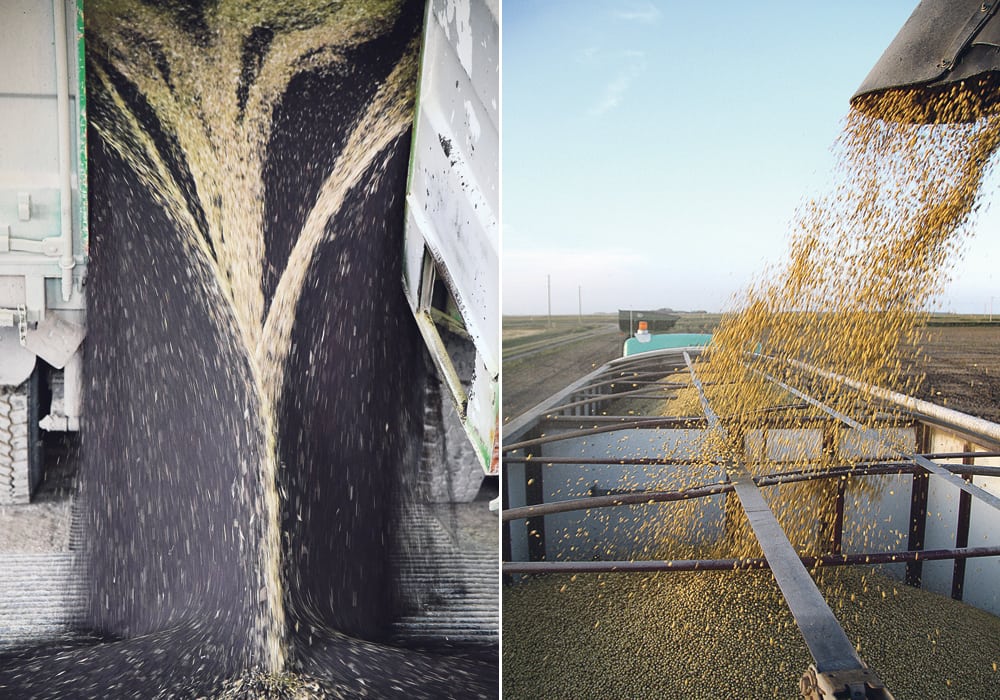Canadian farmers saw their farm equity climb 6.9 percent last year compared to the previous year, and Farm Credit Canada’s principal agricultural economist said that falls in line with FCC’s analysis.
Data released by Statistics Canada June 20 reported that 2017 farm equity climbed $36.4 billion to $535.3 billion, compared to $500.75 billion in 2016.
“I think it points to an industry where we’ve come off of some good times over the past five-plus, 10 years, and we’re continuing to see a little bit of slowing on some perspectives,” said Craig Klemmer.
Read Also

Farming Smarter receives financial boost from Alberta government for potato research
Farming Smarter near Lethbridge got a boost to its research equipment, thanks to the Alberta government’s increase in funding for research associations.
“But also, I think there is still optimism in the industry.”
While he projected a slowdown in growth, he said farm asset values will continue to appreciate.
According to the StatsCan report, farm asset value rose 6.9 percent compared to the year previous to $632.2 billion nationwide in 2017, mostly due to higher farmland values. Farm real estate climbed by 7.8 percent to $480.1 billion and now accounts for more than three-quarters of total farm asset value.
Klemmer said a recent FCC report showed farmland values rising by 8.4 percent, so the two reports taken together indicate that investors are seeing opportunities.
“I think, overall, where we’re sitting right now, is that we’re seeing a very balanced, stable market, where assets are increasing, revenue is increasing and debt is increasing, in kind of a fairly stable trajectory at this point.”
He said market disruptions and trade concerns will affect farm revenue and need to be monitored. As well, the Bank of Canada has said it will raise interest rates this year, which will increase the costs of borrowing and could stress farmers’ abilities to pay down debt.
However, he said the farm-debt-to-asset ratio points to a healthy industry. That ratio reached 15.3 per cent in 2017, according to the StatsCan report, slightly more than the five-year average of 15.2 percent.
“So, I think there are some pretty good stories,” Klemmer said.
Nationwide for 2017, farmers recorded assets of $632.2 billion with liabilities of $96.9 billion.
Manitoba farmers recorded assets of $49.984 billion with liabilities of $8.981 billion, Saskatchewan farmers realized $114.436 billion in assets compared to $14.663 billion in liabilities, and Alberta posted $173.365 billion in assets and $22.375 billion in liabilities.
Farm inventory values also rose, contributing to the overall increase in asset values.
The total value of crops, livestock, inputs and poultry increased six percent from 2016 to $47.3 billion. It marked the first year inventory values have increased since 2014.
Farm inventories of market livestock and poultry increased the most, rising to $8.7 billion, a 7.2 percent increase from 2016. The increase was credited mainly to higher prices for calves, which rose 6.4 percent, and steers, up 5.2 percent.
Breeding livestock inventory values increased 5.2 percent to $13 billion on the back of higher beef cow prices, which were up 4.8 percent, and milk cows, which were up 4.1 percent.
Higher year-ending stocks for canola and soybeans were cited as the main reason for the increase in crop inventory values.
Soybean inventory value rose 44 percent and canola rose 9.5 percent compared to 2016.
Klemmer said those numbers point to the growing popularity and the high value of those two crops.
Many farmers may be holding crops in their bins longer, waiting for better prices, he added.
Canola and soybeans made up 86.5 percent of the 2016-17 increase in crop inventory value and 39.8 per cent of the total crop inventory values for 2017.

















